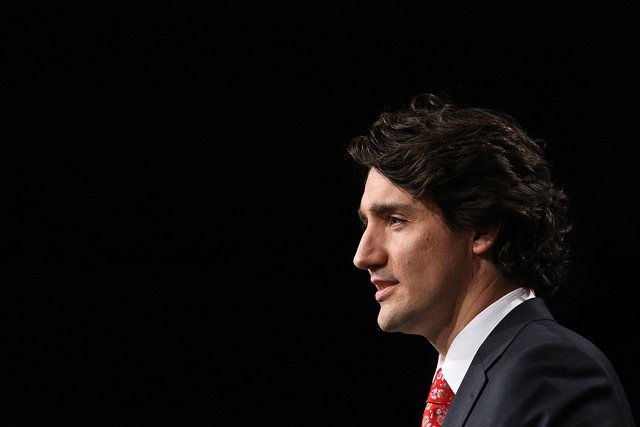With a federal election scheduled next October 19, the current outlook is that it will produce a minority parliament. While it is possible for either the NDP, the Conservatives, or the Liberals to win an outright majority, none of the three have been polling in majority territory.
Without a majority winner, the party that elects the most members of Parliament will be asked to form a government.
If the Conservatives win more of the 338 seats to be contested than any other party, Stephen Harper can stay on as prime minister — unless the opposition parties chose to defeat his minority government on a motion of confidence. The earliest opportunity to do that would be the Speech from the Throne that opens a new session of parliament.
The argument for defeating Harper immediately rests on majority rule in a democracy. The two main opposition parties would together have more than 50 per cent of the vote, entitling them to form a government. The Conservatives would have less than 40 per cent of the vote, encouraging the opposition parties to defeat them in accordance with the democratic expression of Canadian voters.
A prime minister whose government is defeated in the House of Commons ceases to be prime minister. The Governor General is no longer obliged to follow his counsel. Normally, the Governor General would then invite the second party in the House to try and form a government, rather than agree to call another election as the ousted PM might prefer.
The second party (NDP or Liberal) could attempt to govern as a minority. Or, it could sign an agreement with the third party, or enter into a formal coalition.
When Justin Trudeau was asked if the Liberal party would form a coalition government with the NDP, at first he said: maybe not with Tom Mulcair as NDP leader; if someone else were leader it might make sense. Later, Trudeau was unequivocal: no to any coalition with the NDP.
Does Justin Trudeau expect to win an outright majority in the election scheduled for this coming October? He wants Canadians to think he can do it. So he would prefer not to talk about coalition government, which implies a minority or “hung” parliament.
The fact remains: turn down one coalition partner, the door opens to another. When the Liberals reject the NDP, they embrace Conservatives.
During the minority Harper governments of 2006-08 and 2008-11, Canada was governed by a silent Liberal-Conservative partnership. The two parties did not sign an agreement or consult on policy matters, and would not have liked to be told they were governing the country in coalition. But they were in everything but name.
When offered an opportunity to form a substantial coalition with the NDP, the Liberals first accepted, and then, when Michael Ignatieff had replaced Stéphane Dion as leader, rejected the NDP proposal — and continued to vote regularly to support the Conservatives.
On important issues of economic policy (taxes, trade, spending cuts) the three Liberal majority governments (1993-97, 1997-2000, 2000-2003) headed by Jean Chrétien were barely distinguishable from the two Conservative majority governments (1984-88, 1988-93) headed by Brian Mulroney.
Historically, Canadian capitalists while opposing the CCF/NDP have always had two parties to support them. The Liberals were the Catholic party with a base in Quebec. The Conservatives were the Protestant party based in Ontario. The parties disagreed on specific issues, but on subsidizing the capitalist economy there was little difference.
John Ibbitson of the Globe and Mail has written that there is very little to choose between the Conservatives and the Liberals on the main economic issues, so it would make more sense for Trudeau to align himself with Harper than with the NDP. Certainly the Liberal leader had no trouble accepting former Conservative MP Eve Adams as a member of his caucus.
Strategic voters might want a coalition of Liberals and the NDP, and encourage voting Liberal to see a progressive government of the centre left being formed. Indeed from 1963 until 1968, without a formal coalition, the Liberals and NDP combined their votes, and created the modern Canadian welfare state (medicare, CPP, post-secondary education grants, universal welfare, Art Bank). Again between 1972 and 1974, the minority Trudeau Liberals looked to the NDP for policy ideas such as Petro-Canada, and received in return NDP support in the House.
Except that when he closes the door to a coalition arrangement with the NDP, Justin Trudeau is committing to support the Conservatives, if they win the most seats in a minority parliament, just as his Liberal predecessors did.
In fact, rather than wooing the NDP, the Liberals could well seek support from the Conservatives, should the Trudeau-led party dominate a minority parliament.
A clear majority of Canadians want nothing to do with Stephen Harper and want the country to be rid of his government. This group is trying to figure out how to vote Harper out of office.
Canadians vote to elect a parliament. Members of Parliament decide who forms the government.
It makes sense for progressive activists to question Liberal party candidates about their willingness to support a minority Conservative government and their attitude to a Liberal government supported by the Conservatives.
Why would any progressive vote for a candidate who is not committed to rejecting the Harper government?
Duncan Cameron is the president of rabble.ca and writes a weekly column on politics and current affairs.



